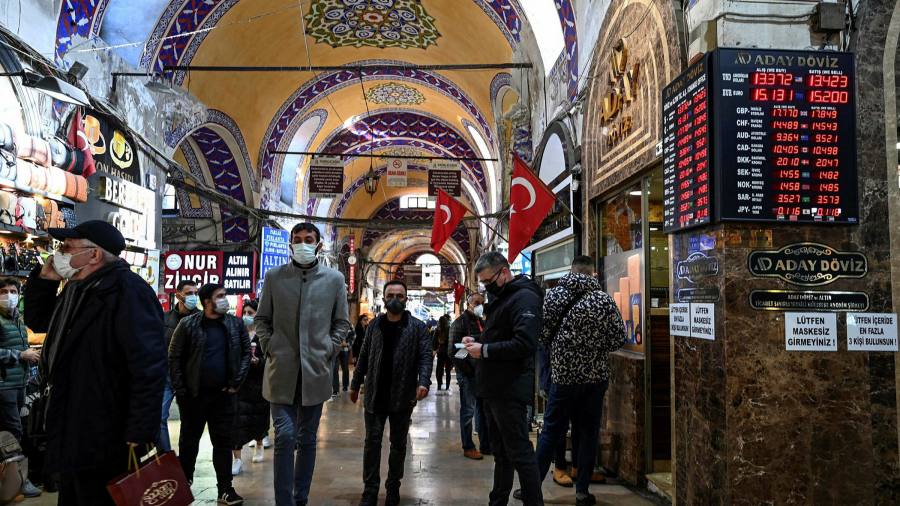Live news updates: Turkey keeps interest rate on hold despite 61% inflation
Singapore’s monetary authority said it would employ two of its three policy tightening tools on Thursday, in a move to combat surging prices that have arisen despite lacklustre economic growth.
The city-state, which employs exchange rates rather than borrowing costs to control inflation, said it would raise the midpoint and steepen the slope of the effective exchange rate band for the Singapore dollar.
While economists had expected Singapore to tighten its stance, adjusting both the slope and the midpoint was an unexpectedly aggressive move. It came as the Monetary Authority of Singapore increased its forecast for inflation and struck a downbeat note on global growth prospects in the face of the war in Ukraine.
Core inflation in Singapore rose to 2.3 per cent year on year in the January to February period, up from 1.7 per cent in the final quarter of 2021, driven by rising energy and food prices. Gross domestic product, also announced on Thursday, grew by 3.4 per cent, slightly missing economists’ forecasts.
In light of global price pressures and a tightening of the labour market, the MAS increased its core inflation forecast by 0.5 percentage points and upped its all-items inflation forecast by 2 percentage points.
Priyanka Kishore, head of India and south-east Asia economics at Oxford Economics, predicted a further 5-basis point tightening of the slope this year, possibly before October if global inflationary pressures persist.
“We expect growth to slow sequentially again in Q2. At 3.3% in 2022 and 2.3% in 2023, our growth forecast is below-consensus, and we expect the output gap to turn positive only in late 2023,” Kishore said in a statement.
“Still, the risks to the growth outlook have shifted more to the downside amid heightened geopolitical uncertainties, rising inflation and downside risks to China due to its continued zero-Covid approach.”




